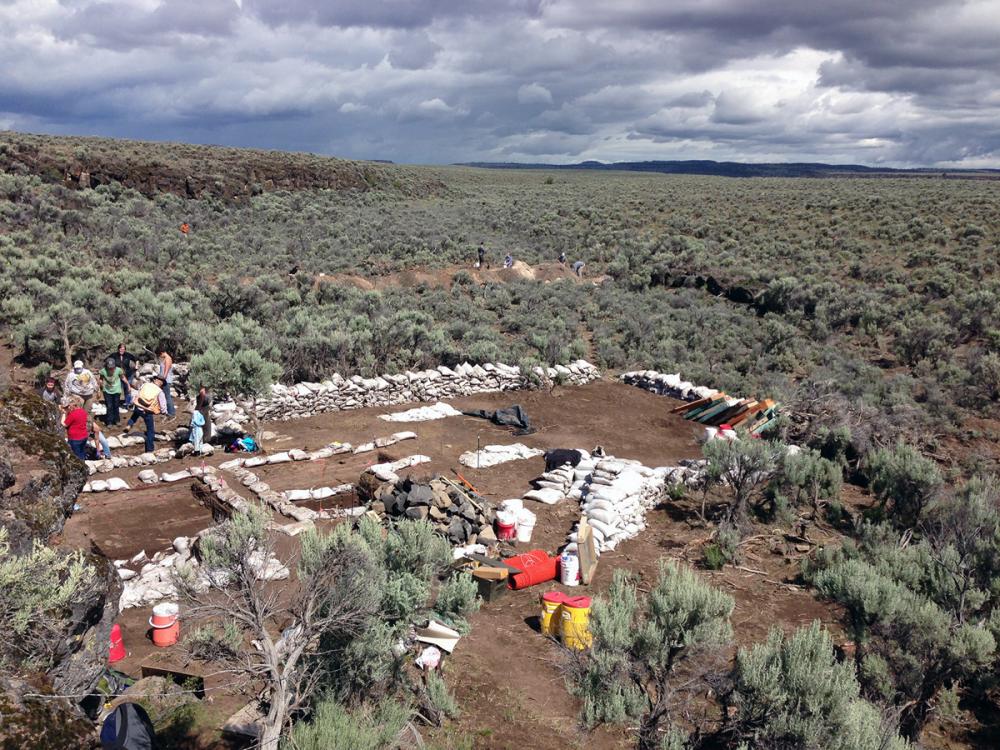Archaeologists with the University of Oregon Archaeological Field School and the Bureau of Land Management recently uncovered a small stone tool at a rockshelter site near Riley, Oregon — a tool that may point to one of the oldest human occupations in the Western United States.
The team, which has been excavating at Rimrock Draw Rockshelter in southeastern Oregon since 2011, discovered the orange agate tool beneath a layer of ash from a Mount St. Helens eruption that occurred 15,800 years ago.
“It’s a very even layer of volcanic ash,” said Patrick O’Grady, staff archaeologist with the UO Museum of Natural and Cultural History and director of the Rimrock Draw excavations. “Based on its position within the site’s overall stratigraphy, it’s unlikely that there has been any significant upward or downward movement over these many thousands of years.”
“The discovery of this tool below a layer of undisturbed ash that dates to 15,800 years old means that this tool is likely more than 15,800 years old, which would suggest the oldest human occupation west of the Rockies,” said Scott Thomas, BLM Burns District archaeologist.  It would also mean that the ancient inhabitants who used the tool predated the Clovis culture — long regarded as the oldest cultural tradition in the Americas — by thousands of years.
It would also mean that the ancient inhabitants who used the tool predated the Clovis culture — long regarded as the oldest cultural tradition in the Americas — by thousands of years.
In 2008, research by UO archaeologist Dennis Jenkins revealed a human occupation at Oregon’s Paisley Caves that predated Clovis by 1,000 years. According to O’Grady, the recent finds at Rimrock Draw may pose further challenges to the long-held “Clovis first” theory.
O’Grady said that the tool was likely used for butchering and scraping animal hides. This week, a blood residue analysis performed on the tool revealed animal proteins consistent with bison — most likely the Pleistocene species Bison antiquus, an extinct ancestor of modern buffalo.
O’Grady, who supervises the UO Archaeological Field School at Rimrock Draw, added that the discovery of cultural material beneath this ash layer will drive the research activities at this summer’s field session.
“We’ll be working to find more of that ash layer — and investigating what’s beneath it — in additional portions of the site.”
The UO Archaeological Field School will offer field sessions at Rimrock Draw Rockshelter and at Connley Caves this summer. Field schools at both sites will run from June 22 through July 31. Applications are currently being accepted, and both undergraduate and graduate students are welcome to apply.
—By Kristin Strommer, Museum of Natural and Cultural History

